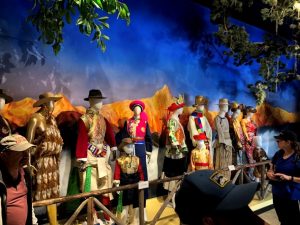
We arrived in Shangri-La almost one week ago, where we are staying at the Chinese Exploration & Research Society Center (CERS). On the first day we were given a tour of the Center to learn about their previous projects as well as the culture of the region. Their past projects include efforts to rescue the purebred Tibetan Mastiff, protection of an endangered species of Tibetan antelope, and the discovery of the true source of the Yangtze River. We also got to experience parts of historical nomadic life, including tasting authentic butter tea, sitting in a traditional tent made of yak hair, and trying on yak hair sunglasses that served to protect nomadic eyes from the bright snow on the caravan salt trade route. This exposure and learning about the local culture allowed us to begin to connect with the community here in Zhongdian.
“This exposure to local roots and culture allowed us to begin to connect with the community here in Zhongdian.”
On the second day, we went down into the village and saw traditional Tibetan houses, discovering how religion, history, and traditional architecture are greatly intertwined into the everyday lives of the people of Shangri-La. We then explored into the wetlands and learned about the biodiversity of the region. Our program and research director, Dr. Bill Bleisch, taught us to distinguish between a simple celery-relative and a plant that releases wolf poison.

On the third day, we went to the local monastery and were introduced to Tibetan Buddhism. We joined Dr. Bill and some CERS members in walking clockwise around the monastery three times before entering, and learned the significance of prayer flags, as well as offerings of barley and pine to the gods. This experience opened our eyes to the role religion plays in daily life here, and helped us better understand the values of the community in Shangri-La.
“The chance to experience these rich cultural sites and explore the biodiversity of Shangri-La has allowed us to better understand and connect with our campers as well as the local community members and CERS staff.”
Later on in the week, we visited Old Town Shangri-La, about a 20 minute drive from the CERS center. Dr. Bill guided us through the New Museum where we learned about clothing customs around the Tibetan plateau as well as the ancient Horse and Tea trade route. We were also able to explore Old Town, including a visit to a small book store that had Chinese literature and postcards reflective of past and present life in Shangri-La.

The chance to experience these rich cultural sites and explore the biodiversity of Shangri-La has allowed us to better understand and connect with our campers as well as the local community members and CERS staff.
